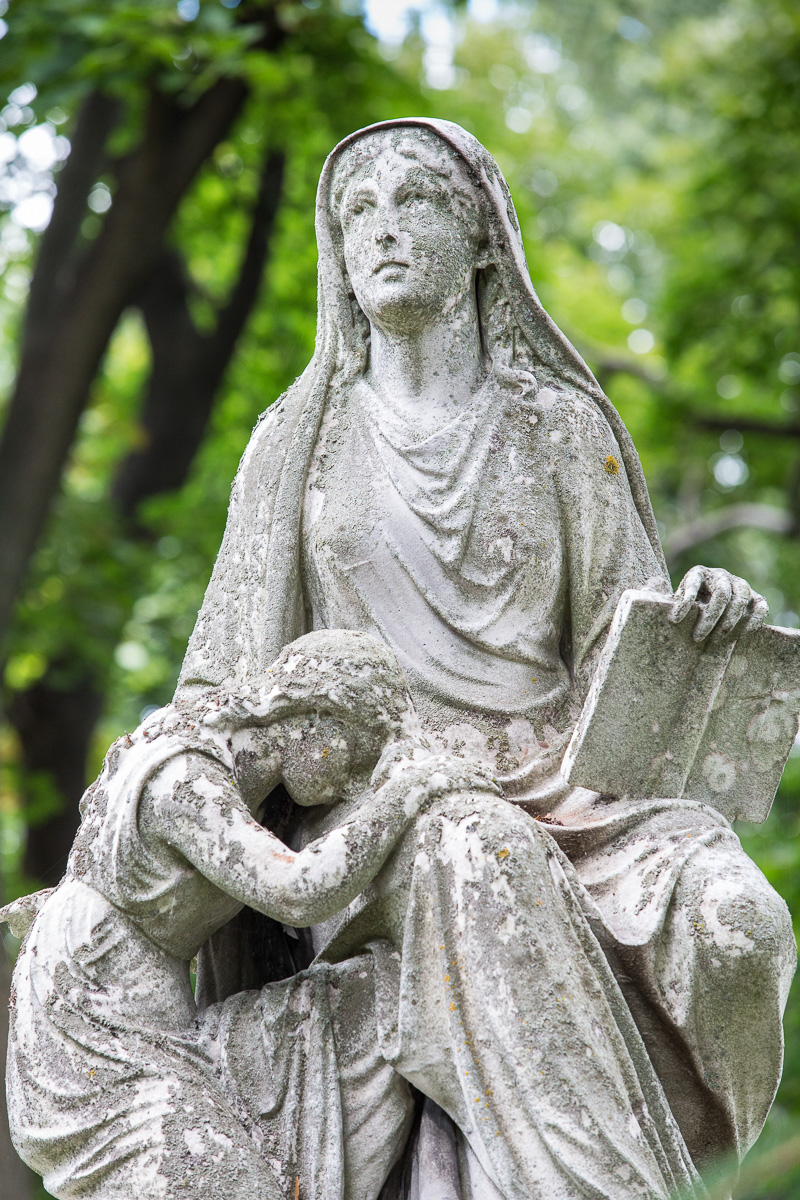After writing a piece about Barthes’ principles of studium and punctum and how I read them in light of Milan Kundera’s meditation on kitsch, I went for a bit of a photowalk through Toronto’s St. James Cemetery. I like walking through cemeteries. I find the experience calming. But walking with a camera, I find myself framing monuments in the viewfinder and discovering kitsch everywhere I look. Funerary kitsch. Monumental kitsch. Kitsch springing from the ground and declaring itself like a neon sign at an all-night burger joint. Perhaps it declares itself most kitschily with plastic flowers.
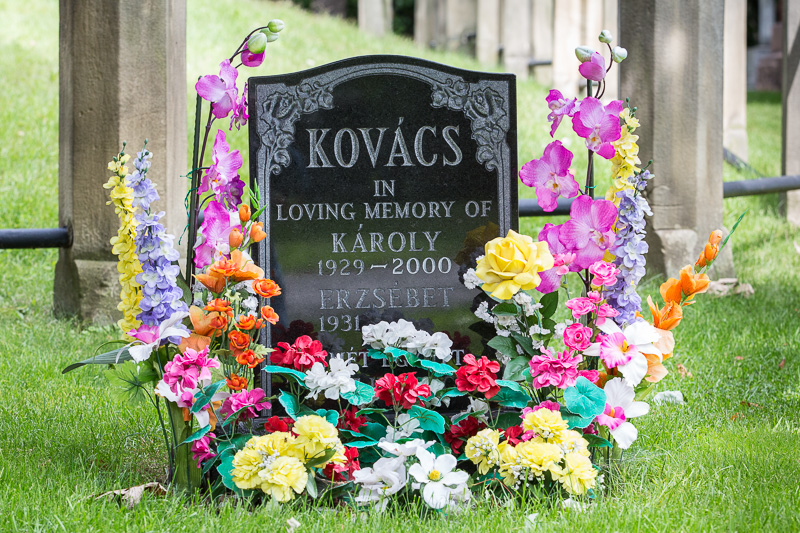
I understand why people decorate a headstones with plastic flowers. Quite apart from the convenience, plastic flowers don’t die. They serve a symbolic function: they point us to our immortal soul which, like plastic, doesn’t die. But if we take seriously Kundera’s observation that kitsch is the denial of death in our representations, then we must conclude that plastic flowers in particular, and maybe the Christian faith in general, are kitschy at their kore. After all, the whole gist of the Christian scriptures is to tack onto the Hebrew scriptures a firm assurance that, when all is said and done, we get to conquer death. Tragedy is impossible because all the bad shit that happens to us is temporary.
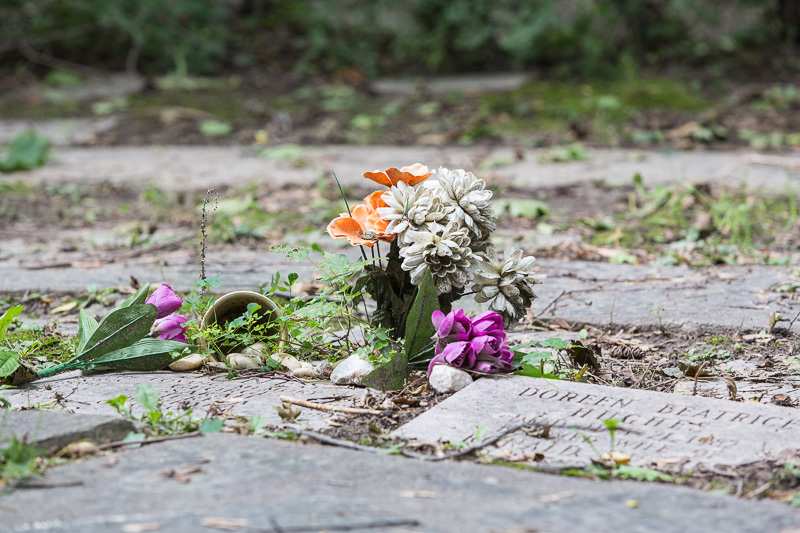
But plastic fades, or it gets dirty. As a symbol, it isn’t as effective as one might like. In fact, the cemetery admin people post signs telling people to remove all their shit from the grave sites by a certain date, otherwise it all gets chucked in the garbage.
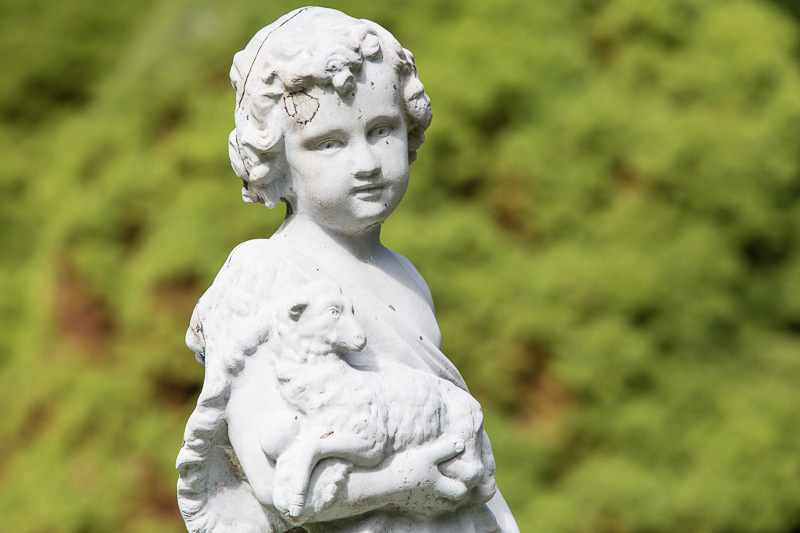
Kitschiness in Toronto cemeteries is compounded by the fact that most Toronto cemeteries, at least those in the downtown core, were founded at the height of the Victorian era, when an element of sentimentality was central to the aesthetic. Victorians may not have interpreted their monuments as maudlin or sappy. We read that into them years after the fact.
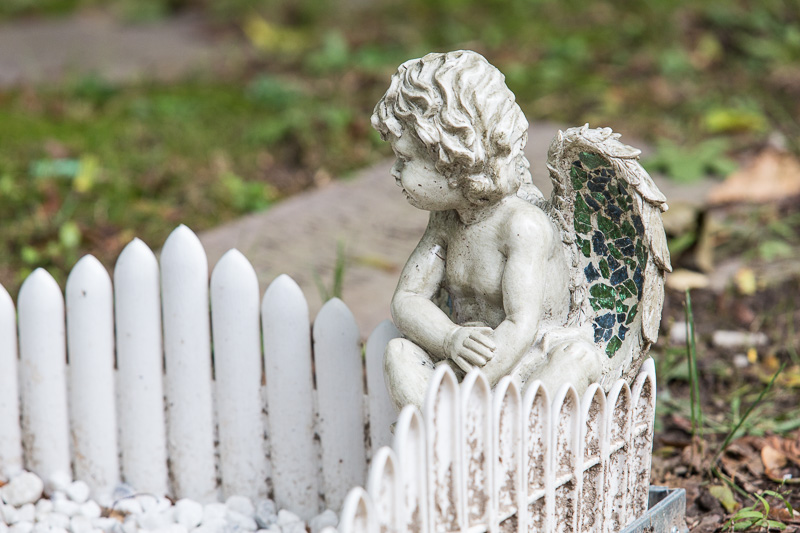
The danger of photographing kitsch is that one might end up with photographs that are, themselves, kitschy. Maybe the antidote is to ensure that the kitschy object appears in a context that undermines the kitschiness.
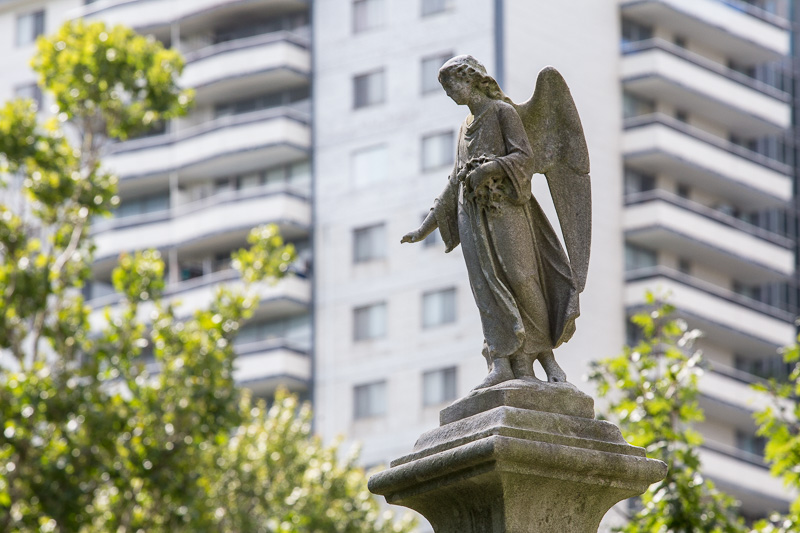
Like the angel who watches over a grave while she herself is overwatched by an apartment block.
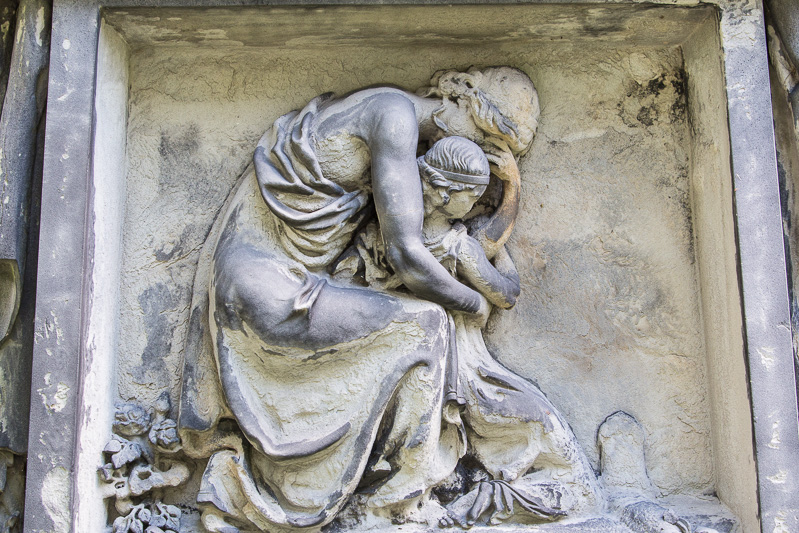
Or like the chipped and weathered figures on the side of a monument. In this case, a monument designed by William Thomas, architect, to memorialize three of his children.
